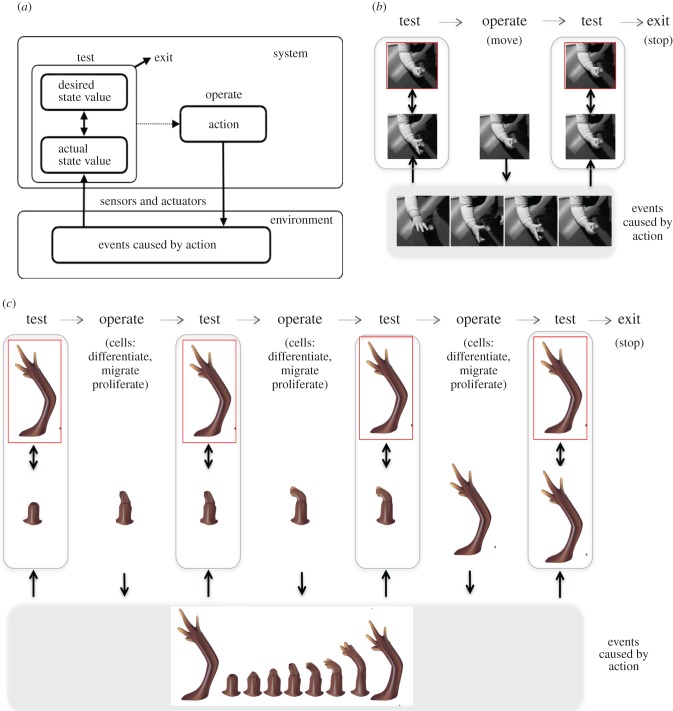Figure 2.
The functioning of the test, operate, test, exit (TOTE) model for action control and regeneration. (a) Generic functioning scheme of the TOTE model (which exemplifies a class of cybernetic models that operate using similar principles, see the main text). The ‘test’ operation corresponds to the comparison between desired and sensed state values. If a discrepancy is detected, then an action is activated (‘operate’) that tries to reduce it. When there is no discrepancy, the ‘exit’ operation is selected, corresponding to no action. (b) An example in the domain of action control. Here, the red box corresponds to a desired state value (handle grasped), which can trigger a series of (grasping) actions; see [69] for an example implementation. (c) The same mechanism at work in regeneration, where a discrepancy between the organism's target morphology and the current anatomical state (caused by injury) activates pattern homeostatic remodelling and growth. In highly regenerative animals, such as salamanders, cells proliferate, differentiate and migrate as needed to restore the correct pattern, and cease when the correct shape has been achieved.

